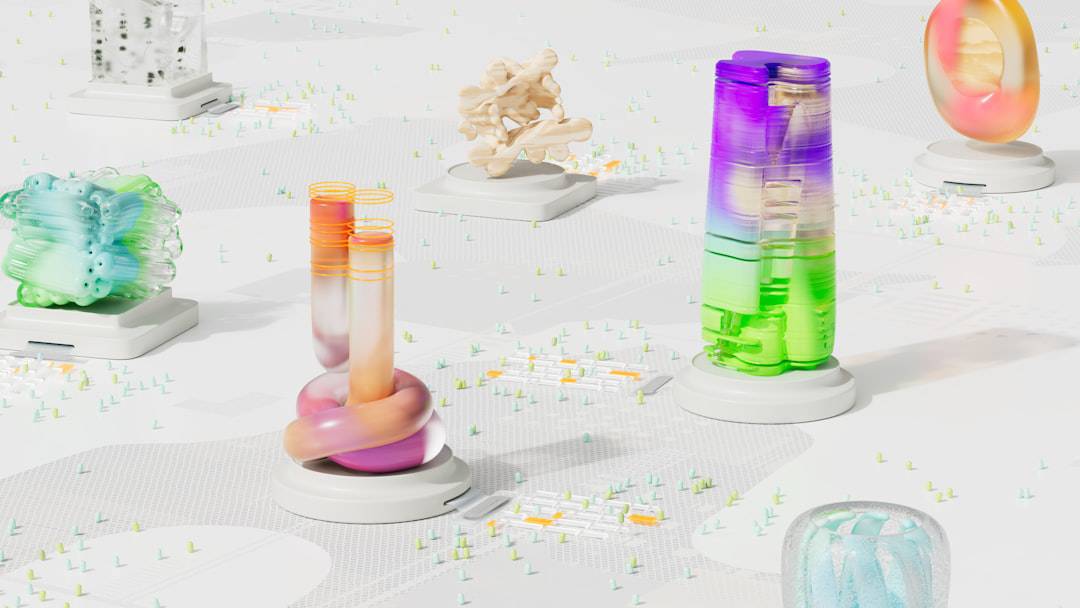Convolutional Neural Networks (CNNs) have revolutionized the field of image recognition and computer vision. CNNs are a type of deep learning algorithm that have proven to be highly effective in identifying and classifying images. The architecture of CNNs is inspired by the visual cortex of the human brain, making them particularly well-suited for tasks related to image processing.
CNNs consist of multiple layers, including convolutional layers, pooling layers, and fully connected layers, which work together to extract features from input images and make predictions based on those features. CNNs have gained widespread popularity and success in various image recognition tasks, such as object detection, facial recognition, and medical image analysis. Their ability to automatically learn and extract hierarchical features from raw pixel data has made them indispensable in the development of advanced image recognition systems.
As a result, CNNs have been widely adopted in industries such as healthcare, automotive, security, and entertainment, where accurate and efficient image recognition is crucial.
Key Takeaways
- CNNs are a type of deep learning algorithm used for image recognition and processing.
- CNNs enhance image recognition by automatically learning features from raw data and identifying patterns within images.
- AI applications in image recognition include medical diagnosis, autonomous vehicles, and facial recognition technology.
- Advantages of using CNNs for image recognition include high accuracy, ability to handle large datasets, and robustness to variations in input.
- Techniques to improve image recognition accuracy with CNNs include data augmentation, transfer learning, and fine-tuning pre-trained models.
Understanding the Role of CNNs in Enhancing Image Recognition
CNNs play a crucial role in enhancing image recognition by effectively capturing spatial hierarchies and patterns within images. Unlike traditional machine learning algorithms, CNNs can automatically learn and extract features from raw pixel data without the need for manual feature engineering. This ability to learn hierarchical representations of images enables CNNs to recognize complex patterns and objects with high accuracy.
Furthermore, CNNs are capable of handling large-scale image datasets and can generalize well to new, unseen images. This generalization ability is essential for real-world applications where the model needs to perform well on diverse and varied images. Additionally, CNNs can be trained with transfer learning, where pre-trained models are fine-tuned on specific image recognition tasks, further enhancing their performance and efficiency.
Overall, the role of CNNs in enhancing image recognition lies in their ability to automatically learn and extract meaningful features from images, generalize well to new data, and adapt to specific image recognition tasks through transfer learning.
Exploring the Applications of AI in Image Recognition
The applications of AI in image recognition are vast and diverse, spanning across various industries and domains. In healthcare, AI-powered image recognition systems are used for diagnosing medical conditions from X-rays, MRIs, and CT scans. These systems can accurately detect anomalies and assist healthcare professionals in making more informed decisions about patient care.
In the automotive industry, AI-driven image recognition is utilized for autonomous vehicles to identify and classify objects such as pedestrians, vehicles, traffic signs, and road markings. This technology is crucial for ensuring the safety and reliability of self-driving cars on the road. In the field of security and surveillance, AI-powered image recognition systems are used for facial recognition, object detection, and behavior analysis to enhance public safety and security measures.
These systems can identify individuals, track their movements, and detect suspicious activities in real-time. Moreover, AI-driven image recognition has also found applications in agriculture, retail, manufacturing, and entertainment industries, where it is used for quality control, inventory management, product recommendation, and content moderation.
Advantages of Using CNNs for Image Recognition
| Advantages of Using CNNs for Image Recognition |
|---|
| 1. Ability to learn hierarchical features |
| 2. Parameter sharing for efficient learning |
| 3. Translation invariance for robustness |
| 4. Ability to handle large input sizes |
| 5. Effective in capturing spatial dependencies |
The use of CNNs for image recognition offers several advantages over traditional machine learning algorithms. One of the key advantages is their ability to automatically learn and extract features from raw pixel data without the need for manual feature engineering. This significantly reduces the time and effort required for developing image recognition systems and allows for more efficient utilization of resources.
Additionally, CNNs are capable of handling large-scale image datasets and can generalize well to new, unseen images. This generalization ability is crucial for real-world applications where the model needs to perform well on diverse and varied images. Furthermore, CNNs can be trained with transfer learning, where pre-trained models are fine-tuned on specific image recognition tasks, enabling faster development and deployment of image recognition systems.
Moreover, CNNs are highly effective in capturing spatial hierarchies and patterns within images, making them well-suited for complex image recognition tasks such as object detection, facial recognition, and scene understanding.
Techniques to Improve Image Recognition Accuracy with CNNs
Several techniques can be employed to improve the accuracy of image recognition with CNNs. One such technique is data augmentation, which involves artificially increasing the size of the training dataset by applying transformations such as rotation, scaling, and flipping to the original images. Data augmentation helps in improving the generalization ability of CNNs by exposing them to a wider variety of training examples.
Another technique is fine-tuning pre-trained models using transfer learning. In transfer learning, a pre-trained CNN model is used as a starting point and then fine-tuned on a specific image recognition task with a smaller dataset. This approach leverages the knowledge learned from a large dataset and adapts it to a new task, resulting in improved accuracy and faster convergence during training.
Furthermore, ensembling multiple CNN models can also improve image recognition accuracy. Ensembling involves combining predictions from multiple models to make a final prediction, which often leads to better overall performance than using a single model.
Challenges and Limitations of CNNs in Image Recognition

Large Amounts of Labeled Training Data Required
One major challenge is the need for large amounts of labeled training data. Training CNNs requires a significant amount of labeled images to learn meaningful representations, which can be time-consuming and expensive to obtain.
Lack of Interpretability
Another challenge is the interpretability of CNNs. The complex nature of deep learning models makes it difficult to understand how they arrive at their predictions, which can be a significant limitation in applications where interpretability is crucial, such as healthcare and legal domains.
Object Recognition Limitations
Moreover, CNNs may struggle with recognizing objects in images that are occluded or have complex backgrounds. This limitation can impact their performance in real-world scenarios where images may contain multiple objects or have varying lighting conditions.
Future Developments and Trends in AI-driven Image Recognition with CNNs
The future developments and trends in AI-driven image recognition with CNNs are promising and exciting. One trend is the integration of attention mechanisms into CNN architectures to improve their ability to focus on relevant parts of an image. Attention mechanisms enable CNNs to selectively attend to specific regions of an image that are more informative for making predictions.
Another trend is the development of more efficient and lightweight CNN architectures that can be deployed on resource-constrained devices such as smartphones and IoT devices. These lightweight models enable on-device image recognition without relying on cloud-based services, leading to faster inference times and improved privacy. Furthermore, advancements in unsupervised learning techniques such as self-supervised learning are expected to play a significant role in improving the performance of CNNs for image recognition tasks.
Self-supervised learning enables CNNs to learn meaningful representations from unlabeled data, reducing the reliance on large labeled datasets. In conclusion, CNNs have significantly advanced the field of image recognition with their ability to automatically learn and extract features from raw pixel data. Their widespread applications across various industries demonstrate their importance in enabling accurate and efficient image recognition systems.
While there are challenges and limitations associated with CNNs, ongoing developments and trends in AI-driven image recognition with CNNs hold great promise for further improving their performance and applicability in real-world scenarios.
If you’re interested in learning more about how convolutional neural networks are being used in the healthcare industry, check out this article on Metaversum. It explores the potential of augmented reality and virtual spaces in revolutionizing healthcare and wellness, and how technologies like convolutional neural networks are playing a crucial role in this transformation.
FAQs
What is a Convolutional Neural Network (CNN)?
A Convolutional Neural Network (CNN) is a type of deep learning algorithm that is commonly used for image recognition and classification tasks. It is designed to automatically and adaptively learn spatial hierarchies of features from input data.
How does a Convolutional Neural Network work?
A CNN works by using a series of convolutional layers to extract features from input images, followed by pooling layers to reduce the dimensionality of the features, and then fully connected layers to make predictions based on the extracted features.
What are the advantages of using Convolutional Neural Networks?
Some advantages of using CNNs include their ability to automatically learn and extract features from input data, their effectiveness in image recognition tasks, and their ability to handle large amounts of data.
What are some common applications of Convolutional Neural Networks?
CNNs are commonly used in applications such as image recognition, object detection, facial recognition, medical image analysis, and autonomous vehicles.
What are some popular CNN architectures?
Some popular CNN architectures include LeNet, AlexNet, VGG, GoogLeNet, and ResNet. These architectures have been widely used and have achieved state-of-the-art performance in various image recognition tasks.











Leave a Reply